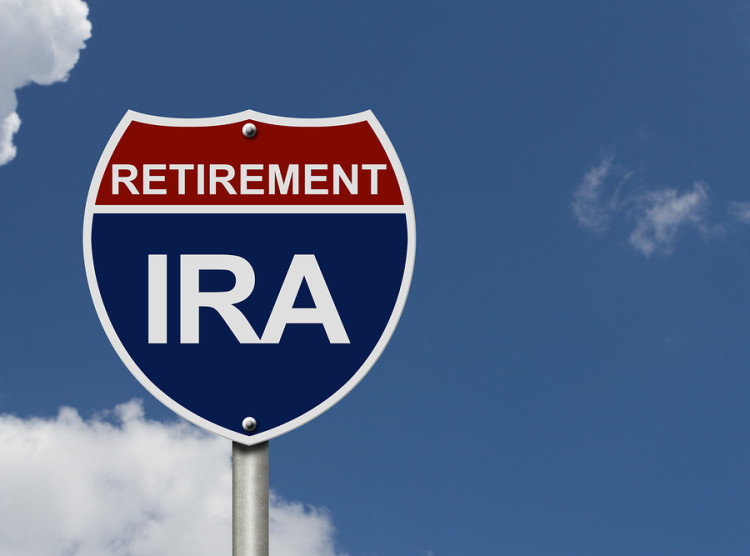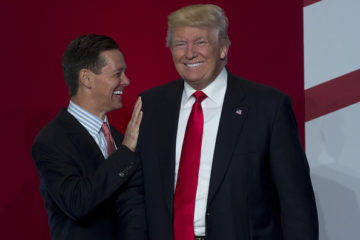What Is Washington Doing to My 401(k) Tax Break?

(Bloomberg) —Twitter had a brief freakout last week after White House spokesman Sean Spicer seemed to suggest that pretax 401(k) contributions to retirement savings were in danger. The White House hastened to say that wasn’t part of the proposed tax overhaul it’s trying to move through Congress.
But Washington, and the money management industry, are abuzz with rumors. Will Roth 401(k)s and Roth Individual Retirement Accounts, which are funded with after-tax money, take on a greater role, even a starring role, in our retirement planning? If so, what will that mean for our finances later in life? The prospect of an upheaval is making a lot of employers who offer retirement plans—and, no doubt, a lot of aspiring retirees—nervous.
Here’s the situation and some of the likely outcomes.
To pass permanent legislation with a simple majority (in today’s Senate, that means without Democrats on board), it must be revenue-neutral, so President Donald Trump needs to find new revenue to offset the cuts he’s seeking. Employers who offer their workers a defined-contribution, or 401(k), plan, or a similar option, fear that Trump and Congress will take a whack at the pretax status of those 401(k) contributions as part of the tax legislation they’re pursuing.
Traditional 401(k)s and IRAs held about $15 trillion in assets ($7 trillion and $7.9 trillion, respectively) as of the fourth quarter of 2016, according to the Investment Company Institute. The government gets its taxes on that money only once people start drawing down their accounts, after maybe 30 or 40 years of saving. Congress, on the other hand, typically thinks in terms of just 10 years when it crafts a budget.
You can see the problem—and, for the government, the opportunity to capture that revenue earlier. The $1,544,000,000,000 red bar below is for employer-sponsored defined-contribution and defined-benefit retirement plans.
From 2016 to 2020, pretax money going into defined-contribution plans was forecast to reduce federal revenue by an estimated $583.6 billion, according to the nonpartisan congressional Joint Committee on Taxation. If you tally the tax breaks for all kinds of retirement savings plans, the ballpark figure is $1.5 trillion in revenue left on the table over a decade, “and that makes it very tempting to take from,” said Bradford Campbell, a partner at law firm Drinker Biddle and a former assistant secretary of labor for employee benefits and former head of the Employee Benefits Security Administration.
Even before last week’s confusion, White House National Economic Council Director Gary Cohn was reported to have discussed “ideas that would remove pretax benefits from retirement accounts including 401(k)s and shift them to after-tax benefits” in a meeting with the Senate Banking Committee in April.
Large plan employers worry that a bigger role for Roths in the retirement plans they offer might not appeal as much to savers as the immediate tax break they get from a traditional 401(k) or IRA. They’re concerned that plan participation and contribution levels will decline and that their 401(k) will become a less attractive benefit.
For small-business owners, who don’t have the muscle to negotiate administrative costs down and who may rely heavily on their own 401(k), changes to the retirement savings law could discourage them from offering a plan. For example, if income levels are used to determine who can contribute pretax, or if the pretax contribution limit is reduced (since the average employee doesn’t contribute the full amount), that could be a disincentive.
There are many moving parts in the tax proposal, but in an all-Roth world, where you fund your retirement savings with after-tax dollars, lower-income workers might struggle with their cash flow. Higher-income workers could feel the effect more in the loss of the current tax break that traditional 401(k)s provide to lessen current taxable income.
Discussions appear to be in the early stages, and any move to favor Roth 401(k)s or IRAs could come with other savings options as part of the mix.
“401(ks) are a critical savings tool for workers, and we are looking to grow more savings in America,” a spokesperson for the House Ways and Means Committee said in an email. “We’re considering solutions that increase the number of people using 401(k)s and other savings vehicles.”
Roth 401(k)s are becoming a more common option in retirement plans. A Roth option was in 60 percent of Vanguard plans as of the end of 2015, up from 46 percent in 2011. Fifteen percent of participants were using the option, according to Vanguard’s “How America Saves” report for 2016. Vanguard doesn’t provide a breakout showing what percentage of assets are in Roth 401(k), but the vast majority of the money is in regular plans.
One proposal being bandied about is a 50-50 split between allowed pretax and post-tax contributions, said Will Hansen, senior vice president for retirement policy at the Erisa Industry Committee (ERIC), a trade association for large employers that deals with employee benefits and compensation issues. Hansen has also heard talk of “a lower limit like $2,500 or $5,000 for pretax and the remaining money goes into a Roth,” as well as discussions about increasing the annual contribution limits to a Roth 401(k) from $18,000 to the $20,000’s, which would appeal to wealthier savers.
The ideas floated on Capitol Hill have included “certainly an all-Roth option, discussion about capping 401(k) contributions based on one’s income, and conversations about a hybrid-type solution involving pretax and post-tax contributions,” said Edmund Murphy, chief executive officer of Empower Retirement, one of the largest retirement plan providers. Murphy doesn’t expect a move to an all after-tax system, noting that an all-Roth plan could discourage savers.
At the Employee Benefit Research Institute, Research Director Jack VanDerhei said “a large percentage” of the group’s members in the defined-contribution world have called to talk about the “potential Roth-exclusivity of 401(k) contributions.”
A likelier outcome from the talks is a hybrid system, such as the ones Hansen and Murphy mentioned. One way to go is to make the first X percent pretax and the next Y percent after-tax, Murphy said. That might not be so bad, according to one study, “Tax Uncertainty and Retirement Savings Diversification.” The study looked at optimal savings strategies for investors able to contribute to both Roth and traditional 401(k)s, and ran a large simulation that found most investors had a better outcome when they had assets in both. It noted that “Roth investments allow investors to eliminate tax risk on a portion of retirement savings.”
A hybrid system might run along the lines of what former House Ways and Means Chairman Dave Camp, a Republican from Michigan, suggested in a 2014 tax plan. To finance cuts in individual tax rates, Camp urged an emphasis on Roth IRAs vs. traditional retirement savings accounts. His plan would have converted “some excludable 401(k) contributions to Roth-style retirement accounts for those contributing more than $8,750” that year, according to a Tax Foundation analysis.
By letting you contribute pretax money, traditional 401(k)s lower your current tax bill. Earnings compound tax-free until, in the case of 401(k)s, you tap the fund without penalty, which you can do when you turn 59½, or when you must start tapping it, at 70½. You pay taxes on any withdrawals at your regular income tax rate. With Roth 401(k)s, funded with after-tax money, earnings also compound tax-free, but you withdraw the money without paying any further taxes on it.
Having a mix of traditional and Roth 401(k)s or IRAs, or “tax diversification,” gives you some financial flexibility when you’re withdrawing money later in life. With a Roth, for example, you don’t have to worry about what tax rates might be 30 years down the line and whether the income you take out will bump you into a higher tax bracket, as you do with a traditional 401(k).
The lack of good data on the likely impact of moving to 100 percent Roth 401(k)s alarms Hansen.
“It’s scary to me that we’d implement a policy with no research or analytics to back up that it would expand or improve the retirement system,” he said. “There’s a concern that with any massive shift to Roth there will be a drop in participation and in contributions, which would devastate the retirement system in America.”
Even though the Trump administration has said it will protect retirement savings, “we are not out of the woods yet,” Hansen said. —With Sahil Kapur in Washington, D.C.
Have personal finance questions or lessons to share? Join Money Talks, the new Facebook community from Bloomberg News.







No Comment